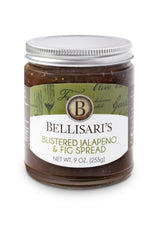
People love to open things and love the unknown, which is why I think the world is in love with stuffed pasta. Get a nice steaming plate of those plump gems, and, with great anticipation, break the outer layer to find what is carefully hidden inside. The first written proof of pasta is from the 5th century A.D. Even with such simple beginnings, a passion for pasta was born. People began to experiment with different types of flour and liquids, and thought of ways to make it taste better. History, irreverently, refers to the birth of stuffed pasta merely as a mere means to use up leftovers. There might be some truth to this, but I prefer to believe that someone wanted to surprise a dear friend.
In Italy and across the United States stuffed pasta is a mainstay. Stuffed pasta has many different popular shapes: the tube, folded (half moon and rectangles), and cut out into custom shapes. Names of pastas differ by the shape and then the size. If you grab the two opposite corners, turn them around your thumb and push the ends together, you will have a tortelli. A smaller version of this same pasta is tortellini and a larger version is tortelloni. This naming variation is common for most stuffed pastas.
In Asian cultures, pasta is very important. Noodles are easily found in the diets of all countries in that region. In China, stuffed pasta holds a very special place in everyone’s diet. Dim sum, or, literally translated, “heart’s delight,” can be found as street food or in many teahouses, and consists of a variety of fillings covered in a dough wrapper, rice covering or steamed bun, or many other small dishes. Fillings are the major variant in dim sum. They consist of ground meat, fish, vegetables, starch, eggs and spices, put together with a flair that will mesmerize the palate. Steamed moneybag-shaped wontons filled with a mixture of pork, mushroom, ginger, water chestnut, onion and egg, or pot stickers stuffed with shrimp, celery, peppers and egg, with one side crisp from the pan, are certain to please. This type of pasta is not served in sauce but set to stand out by itself on plates or nestled in steamer baskets, with the sauce served as a contrast to the item.
The empanada causes much more joy, and much more excitement when bitten. Empanada literally means “encased in dough,” like any good stuffed pasta should be. It is thought to have originated in Spain, but took a stronger foothold in South America. Chile, Argentina, Bolivia and Brazil all have their own unique form of the pasta. The dough is made from flour hydrated with egg, water, broth or milk. Fat, in the form of oil or lard, is also incorporated into the dough to add a flakiness to the empanadas, which are usually baked or fried to a pleasing golden brown. The one commonality of all the empanadas is their shape. All are made into a half moon; their size determines whether the treat will be served as an appetizer or a main dish. Whatever your preference, stuffed pasta can bring delight to any meal for guests of any age. Here is one of my favorite childhood recipes.
Bellisari’s Tuscan Tortellini Stew
Ingredients
1 pound bulk pork sausage(can sub spicy sausage)
1 32 ounce carton reduced-sodium chicken broth
1 14 ounce can diced tomatoes with basil, garlic, and oregano, undrained
1 Jar Bellisari’s Calabrian and Sweet Tomato Fennel Spread
1 cup chopped onion
1 cup water
4 cups chopped kale
1 9 ounce package refrigerated cheese-filled tortellini or ravioli
¼ cup whipping cream
½ cup grated Parmesan cheese
Directions
In a large skillet cook sausage over medium-high heat until browned. Drain off fat. Transfer sausage to a 6-quart slow cooker. Stir in the next five ingredients (through water). Cover and cook on low for 6 hours or on high for 3 hours.
If using low, turn to high. Stir in the next three ingredients (through cream). Cover and cook on high about 30 minutes more or until tortellini is tender. Top servings with Parmesan cheese.






